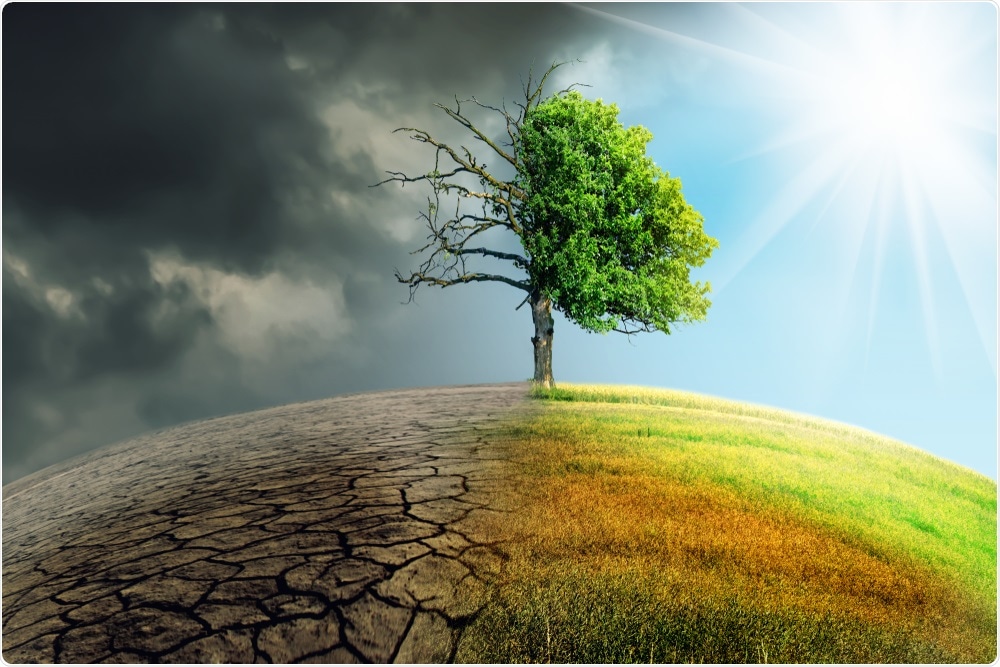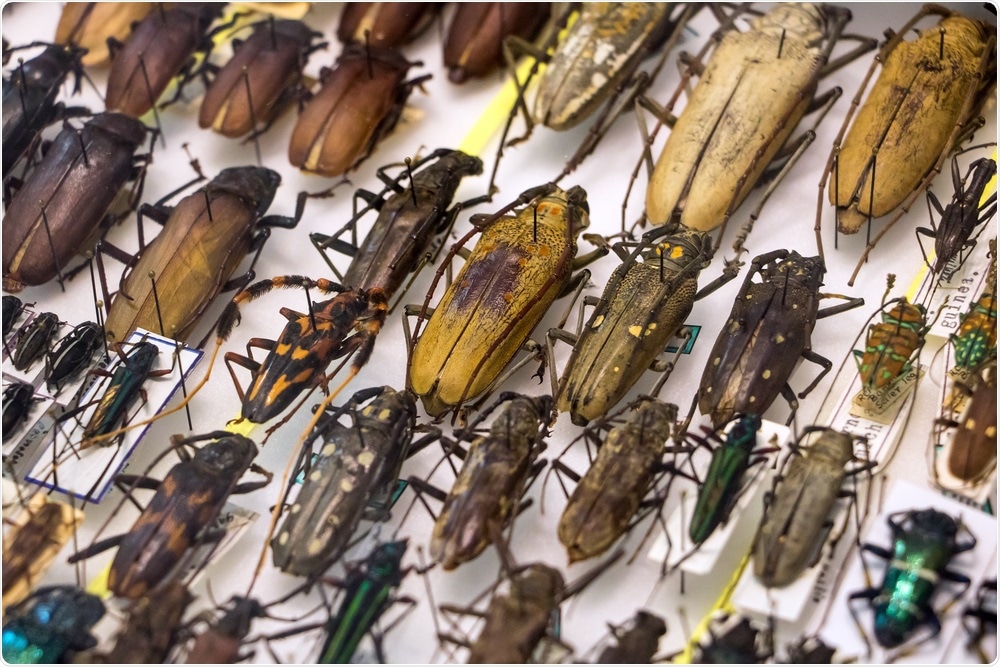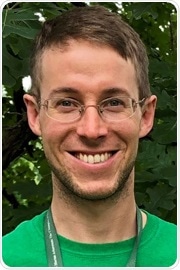Please can you introduce yourself and tell us about your background in biodiversity research?
Sean Hoban is a conservation biologist interested in resilience and adaptation whose research group uses collaborative and multidisciplinary approaches to develop the knowledge and tools to strengthen conservation action, establish data-driven best practices, and translate science to policy and stakeholders.
Colin Khoury is a plant diversity researcher whose collaborative work brings together multidisciplinary expertise to inform conservation strategies for crops and their wild relatives, develop conservation indicators for international agreements, and support evidence-based decision-making toward more sustainable food systems.
Genetic Diversity. Image Credit: Arthimedes/Shutterstock.com
What is genetic diversity within a biodiversity context?
Genetic diversity is one of three major recognized levels of biodiversity, the others being species diversity and ecosystem diversity. Genetic diversity is the variation within species and their populations - diversity in the genetic code - which produces variations in forms, adaptations, physiology, colors, sizes, and more. It is therefore the foundation of other levels of biodiversity. It is the reason why some people are tall, others short, why there are different eye and hair colors.
More importantly, through this variation, genetic diversity helps species (including ours!) to be resilient and to adapt to change and makes ecosystems more resilient as well. It also makes forestry, fisheries, and agriculture more productive and more able to cope with pests and diseases and our changing climate.
How does genetic diversity enable adaptation to changing surroundings and how does this relate to climate change?
Genetic diversity allows natural selection to occur - the more variation in form and function, the more likely it is that some individuals will survive and reproduce as the surroundings change. For example, a genetically diverse coral system might have some individuals who can survive warmer or more acidic ocean temperatures, and their offspring may survive and keep the population thriving.
A genetically diverse forest tree species might have some individuals that tolerate new diseases and insect pests better than other individuals, helping forests recover. It is all dependent on genetic diversity. If this diversity isn’t there, then the population has little means by which to adapt.
Genetic diversity also allows artificial selection and recombination to occur. That is, the more variation in forms of diversity that people are interested in, for instance in types of wheat or corn or rice, the more able these crops will be to withstand pests and diseases, hotter and drier climates, saltier soils, etc.
How are ecosystems becoming more vulnerable as the climate changes and frequency of both extreme events and environmental destruction increase?
The climate crisis is causing many changes. Hot temperatures and droughts cause physiological stress on organisms and can allow pests and diseases to spread to places where previously they could not. And this crisis is already on top of the challenges to wild biodiversity caused by environmental destruction and degradation through changes in land use, development, urbanization, pollution, invasive species, and more.
These combined threats- climate change and environmental destruction - have led to species extinctions and the disappearance of ecosystems. They have also led to severe losses in genetic diversity within species that still persist, an overlooked but just as important challenge to the viability of these species and ecosystems.

Climate Change. Image Credit: Sepp photography/Shutterstock.com
This research shows that scientists can determine how genetic diversity is changing and use this knowledge to prevent it from declining. How can this be done?
Because it is now cheaper and easier to analyze the genetic code (i.e. DNA), and because scientists are increasingly sharing their collected data with one another, we have more and more observations at finer and finer scales. It is possible to determine how genetic diversity in certain populations and regions is changing over time.
Knowing how much it has changed and how fast can also help to identify what is causing the change (for example, overfishing compared to pollution compared to climate change), and how urgently we need to act. More effective conservation actions can then be designed.
What methods are used to analyze DNA for monitoring genetic diversity?
DNA can be analyzed (sequenced) from any tissue of an organism, including remnants such as feathers or shed skin cells, or even poop. This means that it can sometimes be easier to obtain and monitor DNA than actually find and count the organisms, especially those that run or fly fast, are tiny, or are only active in the middle of the night.
There are many tools used to analyze DNA and these have changed enormously over the last 50 or so years, becoming faster, more powerful (i.e. able to read more of the genetic code of an organism), and more economical. Nowadays genetic diversity can be analyzed using palm-sized machines that can plug into an ordinary laptop. This is exciting as it is opening up the possibility of measuring genetic diversity directly in nature, rather than back in the lab.
Once genetic diversity is read, it then needs to be interpreted to make sense of the data, which is typically a huge amount of information. This part of the process requires expertise in statistics and computation but again has become easier and more accessible over time. Many scientists partner with specialized organizations who analyze and sometimes also interpret the genetic data so that botanists or wildlife biologists or conservationists without specialized training can still benefit from genetic diversity information.
How can historical data and museum specimens be used to track how genetic diversity changes and evolves?
DNA is a remarkably stable molecule - in dry conditions, it can last hundreds and sometimes thousands of years! Specimens of plants and animals in museums are preserved in dry conditions, and a very small sample of tissue, about one square centimeter, often contains enough DNA to read its code. Such specimens can be found in nature, but are also collected and stored in museums, botanic gardens, seed banks, and other facilities, and are thus a logbook whose DNA we can now read.
Having specimens and their DNA from the past, for example from the early 1800s before the Industrial Revolution or early 1900s before the accelerating changes of the modern era, also allows us to know what “baseline” or “reference” we should aim for in restoration activities.

Specimens. Image Credit: Milkovasa/Shutterstock.com
What are the FAIR principles and how will they help in sharing data and finding collaborative efforts to protect biodiversity?
FAIR stands for Findable, Accessible, Interoperable, and Reusable. For data to be used by scientists it must be clear where it is stored, easy to search and to download, compatible with other data and in different computing environments, and explained in sufficient detail. Data meeting all of these criteria can be of most help to biodiversity and conservation scientists, even if the data were originally collected for basic research in forestry, ecology, or medicine.
There are also now complementary standards termed CARE - Collective benefit, Authority to control, Responsibility, and Ethics. These standards help ensure that Indigenous Peoples are engaged, included, empowered, and respected when biodiversity data are collected and used.
How do countries, governments, and organizations need to work together to safeguard biodiversity?
Biodiversity can exist very locally, sometimes with a species occurring in only one small location. But it also exists at a very large scale, with certain ecosystems occurring across world regions and many species migrating very large distances.
Species and ecosystems don’t care about political borders or boundaries; they are trying to do what they need to do to survive. If we value their survival, then collaborating and coordinating across political boundaries to share information and implement conservation action is essential. This is the only way to act holistically and comprehensively.
Countries and governments make commitments to work together to safeguard biodiversity through international agreements, including through various implements of the United Nations (e.g. the Convention on Biological Diversity (CBD), the UN Framework Convention on Climate Change (UNFCCC), the Convention on International Trade in Endangered Species of Wild Fauna and Flora (CITES) and the International Treaty on Plant Genetic Resources for Food and Agriculture (ITPGRFA)).
Many of these agreements are legally binding, thus the global community can in theory hold countries to account for their commitments. Countries and governments may also form regional agreements on more local biodiversity issues of concern.
Due to the increasing globalization of the planet, various organizations interested in safeguarding biodiversity now work across many countries. And of course, the major corporations of the world have activities, and thus impacts on biodiversity, in many countries. These are further reasons why governments cannot confine themselves to their own boundaries only, but rather need to work together to form effective responses to threats to this diversity.
If this collaboration does not happen, how quickly will the world’s biodiversity be destroyed, and to what extent?
Science over many decades has clearly documented gradual, and sometimes rapid, losses in biodiversity worldwide due to human activities, including climate change. It’s not possible to predict exactly how long it would take for all of the world’s biodiversity to be destroyed, but it’s a moot point as humans wouldn’t want to live in such a world, and would indeed be extinct long before that point, as we are absolutely dependent on biodiversity.
Biodiversity ensures the functioning of our global cycles of oxygen, nitrogen, carbon, water, etc. It also prevents soil erosion and makes it fertile so that crops can grow, providing the food we eat. Biodiversity is the basis for a huge range of materials we depend on, from housing to medicine!
Science and activism have also shown that biodiversity loss can be halted, and even reversed, given sufficient energy and awareness. There is still time to protect biodiversity in the world, and small-scale actions are just as important as large-scale ones, such as 30x30 and Half-Earth. Note that these initiatives cannot be solely nature preservation efforts to work. They must include people and their livelihoods. They must focus on social issues, including justice and equality. They must address climate change. The major challenges to humanity, and nature, are interconnected.
Are current global initiatives such as the United Nations Sustainable Development Goals and the European Union Biodiversity Strategy enough to safeguard biodiversity?
Many of the goals and targets outlined in these agreements are ambitious and exciting, as are the new goals and targets currently under negotiation to replace now outdated objectives (for example, the CBD’s Aichi Biodiversity Targets). Tragically, very little progress on goals related to biodiversity have been made.
Although financing of biodiversity conservation is increasing, there is still a huge gap between funding provided and what is needed. And therein lies the bigger problem - it is quite possible for the agreements and their goals and targets to be enough to safeguard biodiversity, but the commitments to actual action are insufficient to achieve it. What we really need is serious, long-term, dedicated action based on these goals.
Can they survive? — Genetic Diversity Explained
Are you hopeful that the world can act to prevent this destruction?
We are optimists in the sense of believing that there is still time, and there is enough knowledge already gathered, to do an adequate job of conserving what remains of biodiversity globally. And that technological solutions can help - in sustainable energy, carbon capture, and many other activities.
We are much less optimistic about political decision-makers' capacities to look beyond immediate interests and, instead, act for present and future generations in coordinated and effective ways. Citizens as individuals and groups must push decision-makers towards more ambition, and faster results.
Where can readers find more information?
About Sean Hoban
Sean Hoban is a conservation biologist at The Morton Arboretum, a plant science research institute and non-profit botanic garden near Chicago, USA.
About Colin Khoury
Colin is a research scientist at the International Center for Tropical Agriculture (CIAT), the Department of Biology at Saint Louis University, and the San Diego Botanic Garden.